Weasel (Mustela nivalis)
Relentless and always hungry. What they lack in size, weasels make up for in appetite, eating a third of their own body weight daily. From birds to bank voles, the small creatures of the forest floor must be ever wary of this energetic hunter.
The weasel has a long, slim body and a short tail.
Credit: Graham Canny / WTML
Weasels will search every nook and cranny on the lookout for prey.
Credit: Mick White / Alamy Stock Photo
Weasels hunt under the cover of long grass and vegetation.
Credit: Kevin Robinson / WTML
Weasels have an extremely high metabolism.
Credit: Anne Marie Kalus / WTML
Common names: weasel, least weasel, common weasel
Scientific name: Mustela nivalis
Family: Mustelidae
Habitat: woodland, grassland, farmland,
Diet: rodents, rabbits and birds
Predators: foxes and birds of prey
Origin: native
What do weasels look like?
Weasels have chestnut-brown fur with white-cream underparts and a long, slim body that ends in a short tail. These predators are not much bigger than the mice and voles they eat, typically measuring just 20–27cm long. Even the largest male weasel is unlikely to weigh more than 195g, while a small female may be just 50g.
Not to be confused with: the stoat, which is larger and has a longer tail that ends in a bushy black tip. Weasel tails are always wholly brown.
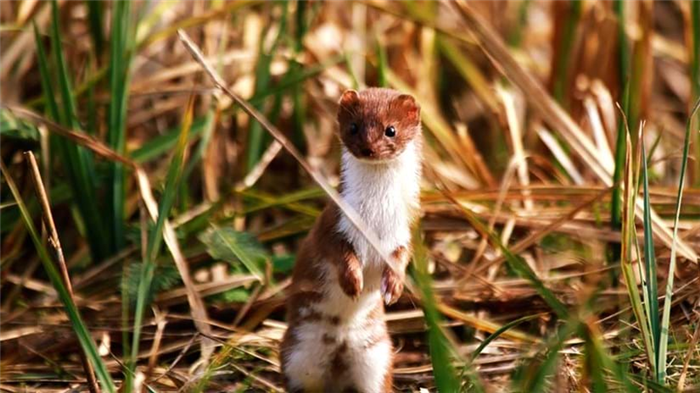
Stoat or weasel? How to tell the difference
James Martin • 01 Feb 2019
Did you see a stoat on your last woodland walk? Or perhaps it was a weasel? Our guide will help you to tell these pint-sized predators apart. We also take a look at some of the other related species found here in the UK.

Credit: Peter Warne / WTML
What do weasels eat?
Voles and mice are the weasel’s primary prey, with its small size allowing it to follow the rodents into their underground burrows. It can also take larger prey, such as young rabbits, and will readily hunt birds and their eggs too. The weasel has an extremely high metabolism and needs to eat roughly a third of its own body weight daily.
According to rural folklore, some weasels are small enough to squeeze through a wedding ring.
How do weasels breed?
Weasels are solitary and only come together to mate. A litter of around four to six young, known as kits, will be born between April and August. The young are normally raised in a nest or den taken over from the weasel’s rodent prey.
Weaning occurs after three to four weeks and the kits are independent in two to three months.
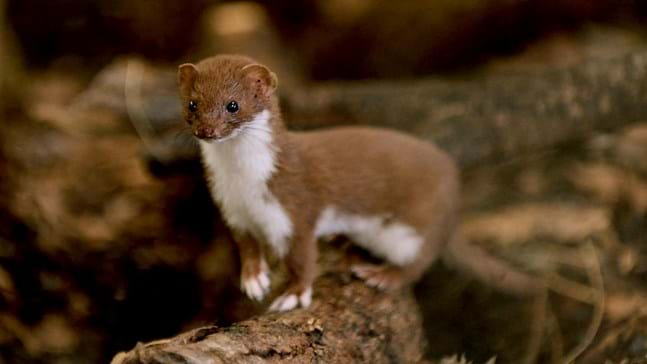
Credit: Anne Marie Kalus / WTML
Where do weasels live?
Weasels are found throughout Britain, but are absent from Ireland. They can survive in most habitats provided there is plenty of prey to eat and cover to provide shelter from larger predators. Weasels rarely spend long in the open and most of their time is taken up with hunting under the cover of long grass and other vegetation. They will also make use of linear features such as hedgerows and drystone walls to move around their territory.
The weasel is the smallest member of the order Carnivora, which also includes cats, dogs and bears. The largest member, the polar bear, can weigh more than 5,000 weasels combined!
Signs and spotting tips
A combination of their small size and habit of sticking to cover means weasels are rarely seen. Most sightings are simply chance encounters. Keep your eyes peeled on your next woodland walk and you may be lucky enough to see one dart across your path in search of its next meal.
Weasels are widespread in the UK.
Credit: Mick White / Alamy Stock Photo
Threats and conservation
Weasels are widespread and thought to be common, but there is a lack of reliable evidence on their numbers. The loss of hedgerows across the UK is one factor that could have a negative impact on the species.
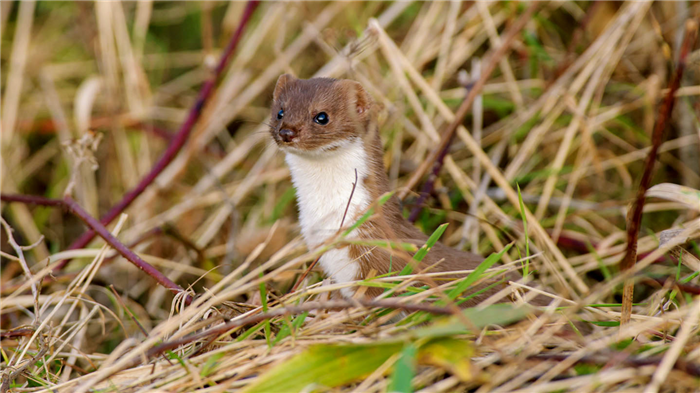
Trees woods and wildlife
Stoat
Fast and definitely furious. The stoat is not afraid to take on prey more than five times its size. Learn all about the stoat, from what it eats to where it lives, and how to spot it.
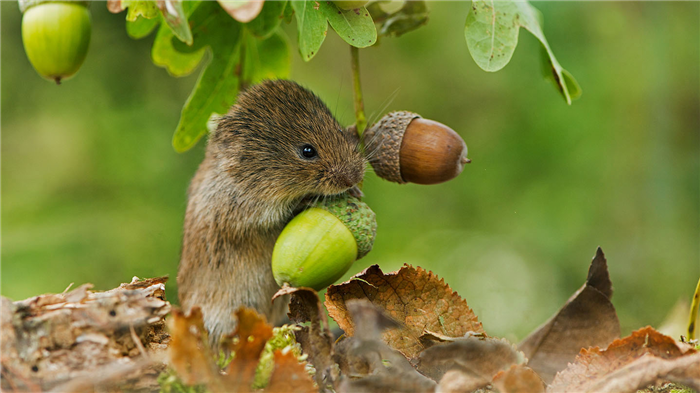
Trees woods and wildlife
Field vole
Cute and in huge numbers, but rarely seen. The grass-tunnelling field vole is our most abundant mammal. Find out how they breed, what they eat and where to spot them.
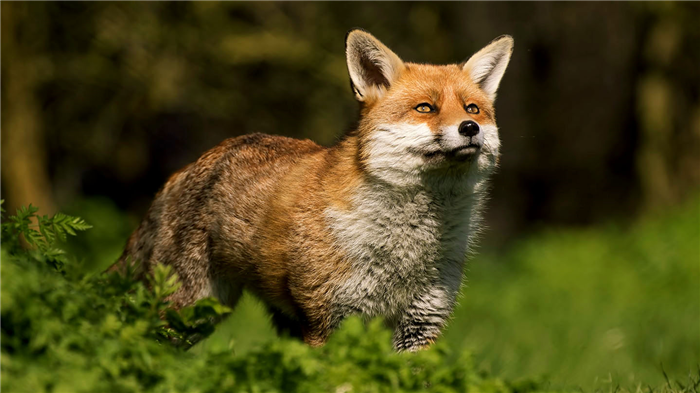
Trees woods and wildlife
Ever adaptable, the fox sits top of the woodland food chain with a diet that takes in everything from birds and beetles to rabbits and rats. Find out what foxes eat, how they breed and how to spot them.
Keep in touch with the nature you love
The Woodland Trust is a charity registered in England and Wales (No. 294344) and in Scotland (No. SC038885). A non-profit-making company limited by guarantee. Registered in England No. 1982873.
Woodland Trust (Enterprises) Limited, registered in England (No. 2296645), is a wholly owned subsidiary of the Woodland Trust. Registered office: Kempton Way, Grantham, Lincolnshire, NG31 6LL.
The Woodland Trust and Woodland Trust Nature Detectives logos are registered trademarks. Images © protected Woodland Trust. VAT No. GB520 6111 04.
What Do Short-Tailed Weasels Eat?
The short-tailed weasel (Mustela erminea) lives in the northern temperate regions of North America and Eurasia. These animals have typical weasel form: a long thin body, a long neck, short legs and a small head. The fur on their underside is pale, and the rest of their fur is reddish-brown to black for most of the year. During winter their fur turns white, to camouflage them in the snow. This winter coat inspires “ermine,” another name for this animal. Ermine is a French word meaning “white winter color.”
Short-tailed weasels live in woodland areas around lakes and rivers. They require heavy underbrush for hiding when they stalk their prey, but they tend to avoid dense forests. They are solitary creatures, and maintain exclusive home ranges by scent-marking and patrolling their boundaries. Home ranges span across 25 to 50 acres, depending on the quantity and density of food sources in a range. Males’ home ranges may cover twice as much territory as those of females. Ermine build burrows within their home ranges but sometimes take over abandoned burrows or nests of their prey.
Like most weasels, these animals are true carnivores. They prey on mammals rabbit-size or smaller. Short-tailed weasels will consume voles, shrews, rabbits, rats, chipmunks and other small mammals in their habitats. When such animals are scarce, short-tailed weasel will turn to birds, eggs, frogs, fish and insects. Males tend to chase and consume larger prey than females.
Food Habits
Short-tailed weasels hunt primarily at night. When they spot potential prey, they rush to overtake the animal quickly, sinking their teeth into the back of the victim’s neck and head. They kill their prey by biting the base of the animal’s skull repeatedly. Because short-tailed weasels must eat at least once a day, they store extra food in case hunting is unsuccessful later. When their favored supply of mammals is scarce, they will go after animals such as insects that are easier to catch. In the summer, they’ll also consume fruit and berries.
Ermine move quickly, both aboveground and in underground tunnels and burrows. Females prefer to hunt in underground tunnels; males more often hunt on the surface. A weasel moves carefully, investigating every hole and crevice. When tracking its prey, it moves in a zigzag pattern to escape detection. Short-tailed weasels may travel over 9 miles in one night in search of food. These solitary animals do not hunt together, and do not associate with other ermine except while mating.
What Do Weasels Eat?
Weasels are primarily nocturnal, small carnivores living across North America. They live a solitary lifestyle and have a varied diet?
Weasels are carnivores and will eat almost all animals they find. Weasels eat small mammals, insects, lizards, frogs, birds, and birds’ eggs. They are opportunistic and will store food for later. Weasels eat up to 50% of their body weight every day and can eat up to 10 times a day.
These extraordinary creatures hunt small rodents, birds, and occasionally lizards and frogs. Various stories about their diet and hunting skills exist, and most are entirely incorrect.
In this article, I look at what weasels eat and their eating habits and debunk some myths and stories.
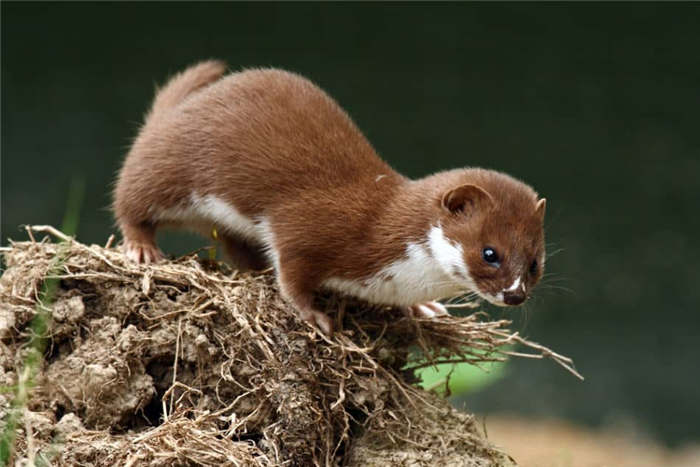
What Do Weasels Eat?
Weasels are opportunistic hunters. They feed multiple times a day and also store food for later use. They will hunt anything they find, including mice, rats, and voles, which make up more than 80% of their diet.
Weasels will also feed on frogs, lizards, birds, eggs, small snakes, and rabbits. They will steal hens from farmers if they have a chance to do so. During summer, they will occasionally eat berries.
Weasels are known for eating small fish, amphibians, turtles, hedgehogs, and invertebrates when no other prey is available. In the northern region, weasels also prey on collared lemmings.
Having a high metabolic rate, weasels eat up to 10 times per day. Due to their size, the quantity of one meal is usually relatively small. Weasels eat up to 50% of their body weight in one day.
A weasel needs to feed regularly as they cannot store fat in their bodies.
There are three species of weasels living in North America, and they vary in appearance, size, and feeding habits.
Least Weasel
Voles and mice are the preferred prey of the least weasel. The least weasel will also feed on small birds, insects, and carrion. They are the smallest species of weasel, and their prey is proportionally smaller too.
Short-tailed Weasel
The diet of the short-tailed weasel consists mainly of rats, mice, shrews, and chipmunks. If those are difficult to find, they will eat eggs, fish, insects, and birds. Their diet is similar to the long-tailed weasel.
Long-tailed Weasel
The larger long-tailed weasel feeds on mice, rats, rabbits, gophers, voles, and chipmunks. They prefer mammals, but they will also eat insects and small bird species if unavailable. They will hunt their prey in the vicinity of a water source.
How Do Weasels Hunt?
Weasels rely on finding food through their excellent sense of smell. They hunt by swaying their heads from side to side to pick up the scent of their prey.
Weasels have been seen to jump in the air to catch birds and jump on them to immobilize them before biting their neck to kill them with one bite. If they cannot take their prey down with one bite, they will keep biting, inflicting wounds to the throat or the spinal column to sever significant blood vessels.
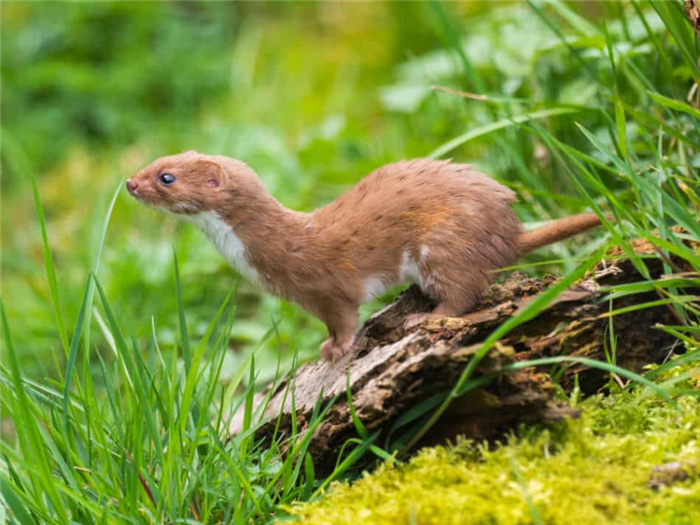
What Are The Feeding Habits Of Weasels?
There are two reasons why weasels prefer rodents and mammals in general over other food sources. Firstly, the nutritional value of rodents is higher than a frog or a lizard. Secondly, small mammals live in burrows. Weasels will enter the hole, kill the animal, and temporarily use the den for shelter and food storage.
As already mentioned, weasels do not store excess fat and feed all year round. The ability to catch and consume various prey is essential. In different seasons, various prey is available to them.
Weasels must remain thin to be able to enter the burrows of the small animals. Weasels can also swim to catch fish and have extraordinary climbing skills to steal eggs from birds’ nests.
Their diet varies throughout the year also. When prey is available in high numbers and variations in spring, the weasel will eat rodents and any other food that does not require a lot of energy to catch.
All animals are much less active in winter, so weasels must locate burrows to find rodents because there are fewer eggs, frogs, and fish. Weasels have to eat a lot in winter to keep warm and healthy. Weasels also need to steel burrows from their prey to protect them from predators and freezing temperatures.
Do Weasels Eat Livestock?
Weasels are well-known for their aggressive nature, and they can kill prey larger than themselves. They often kill prey much larger than necessary for their food intake.
Multiple cases have been reported where weasels have killed hens or rabbits kept by farmers. Killing livestock is a different story.
There are stories about packs of hungry, aggressive weasels killing large animals and attacking humans, even drinking their blood. These are, however, a part of folklore in numerous places and cultures.
Weasels live solitary lifestyles, except when mating and when females are raising their young. It is possible to see males and females hunting together in the mating season. When the adult female raises her offspring, she will take them hunting. The young grow up fast, and litters can be quite large, so people often mistake them for packs.
Weasels cannot kill prey of livestock size, such as sheep. Even if they could kill it, they would not be able to drag it to a safe place to eat. They occasionally kill ducks and geese, but this seems to be the largest prey they will attack.
Farmers are not weasel lovers because weasels can severely damage poultry populations. However, weasels can also be helpful, as they eat common pests like rats in large quantities.
Do Weasels Eat Cats And Dogs?
Weasels are aggressive and will stand up and fight any animal posting a threat. They will also try to attack humans if feeling endangered.
Weasels are capable predators, but they are small. The largest species living in North America, the long-tailed weasel, weighs between 3 and 9 ounces (0.34 kg). They are 11-20 inches (ca. 51 cm) long, including tails, which make up half of their size.
Weasels are much smaller than an average house cat. Cats are predators with sharp claws and strong teeth too. Stories about weasels eating pets such as cats and dogs are similar to livestock. It is just a myth and folklore.
Weasels are the smallest carnivores on the planet, and they are prey to various animals, including cats and dogs. There have been documented cases where cats and dogs killed weasels.
Predators do not eat predators very often. Larger animals will kill smaller ones to eliminate the competition but generally do not feed on them. Weasels are under constant threat of being killed by larger animals.
One more reason behind these stories is fishers. They are a part of the weasel family, and there have been documented cases of them killing cats in the wild.
Fishers are much larger than weasels, and during winter, when no other food source is available, they have been known to attack small lynx.
If a weasel can’t kill a house cat, there is no chance it could kill an average-sized dog. There is a theoretical chance it could kill a tiny breed of dog, smaller than a rabbit, but those would never cross paths with a weasel in the wild.
What To Feed A Pet Weasel?
In recent years, pet weasels have become popular. People see them as exotic and exciting animals to keep at home. Having a pet weasel is not an easy task as they are not domesticated animals. Feeding them can be pretty demanding too.
Firstly, if they are not the only pet, they could attack and possibly kill and eat other pets. Having a parrot, rabbit, or hamster in the same house could be dangerous.
Giving pet weasels live animals for food is impossible. Weasels are very similar to ferrets, and there is dry and canned food for ferrets available on the market.
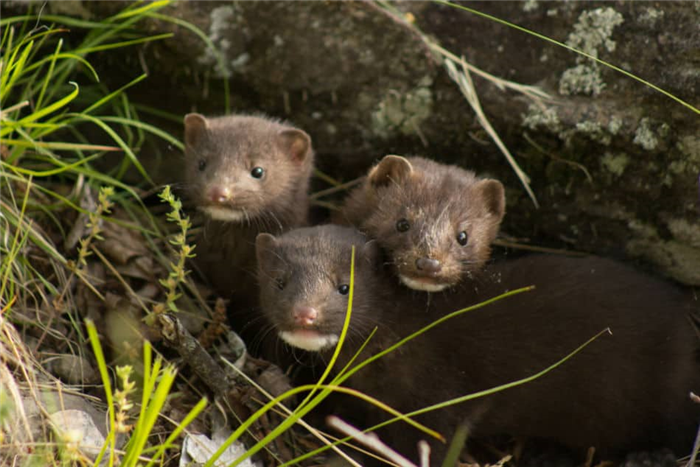
Some weasel owners give them cat food, as both species are carnivores, but cat food has different additives, such as vitamins and minerals than ferret food. Ferret food contains more protein than cat food.
It is essential to choose high-quality food manufacturers that contain mostly meat. Cheaper alternatives include a lot of grain as fillers to lower the price. Food with fillers is not suitable for weasels, and it can cause health problems. Buying quality ferret food is expensive but necessary.
Occasionally, owners will give them dead mice, usually sold to feed pet snakes. It is also possible to feed weasels with poultry.
In the wild, ferrets will combine different prey, and feeding them mice and chicken at home can’t provide all the nutrients necessary for a healthy life. A balanced diet, including dry and canned food, is essential.
When dosing food, owners should not give too much at once but rather feed their pet weasel in small quantities more often, which imitates their natural feeding pattern. Weasels will also hide bits of food and store them for later.
Bestselling Animal Repellers

Bestseller No. 1
Facts About Weasels

Weasels are small mammals with long bodies and necks, short legs and small heads. They are closely related to ermine, ferrets, polecats and minks — all members of the Mustela genus — and are in the same family (Mustelids) as badgers, wolverines and otters.
Size & description
Weasels are usually brown, grey or black with white or yellowish markings. All weasels become all white in the winter, though. The winter fur of the least weasel glows a bright lavender color when exposed to ultraviolet light, according to the Nature Conservancy.
Weasels come in many sizes, but the most notable is the least weasel. It is the smallest carnivore in the world, according to Animal Diversity Web (ADW). They weigh about 1 ounce (25 grams) and grow to just 4 to 10 inches (11 to 26 centimeters) long.
Larger weasels include the long-tailed weasel and the tropical weasel. They grow to 10 to 12 inches (25 to 30 cm) long and weigh 3 to 12.3 ounces (85 to 350 g). Their tails can grow to around 4 to 8 inches (10.2 to 20.3 cm) long.
Habitat
Weasels are adaptable and live all over the world. For example, the long-tailed weasel lives in North America, while the tropical weasel lives in South America. Japanese weasels are found in habitats grasslands, forests, villages and suburbs across Japan. Mountain weasels are found in in central and east Asia and the African striped weasel is found, predictably, in Africa.
The most common weasel is the short-tailed weasel. It can be found in North America, Europe and Asia, in regions as far north as the Arctic. Their homes include marshes, scrubs, hedgerows, alpine meadows, riparian woodlands and riverbank habitats, according to the International Union for Conservation of Nature and Natural Resources (IUCN).
Habits
As nocturnal animals, weasels sleep during the day and are active at night. Most of a weasel’s time awake consists of hunting, storing excess food and eating. Their bodies don’t store fat, so they need a constant supply of food to provide enough energy. In fact, the least weasel eats 40 to 60 percent of its body weight every day, according to the Nature Conservancy.
Though weasels can dig their own burrows quite quickly, they sometimes take over other animals’ burrows and make them their own. They have even been known to take over termite hills.
Weasels’ diets usually consist of rats, mice, voles and rabbits. Frogs, birds and bird eggs are also on the menu, from time to time. Their small, thin bodies allow them to squeeze into tight spots to reach small prey.
The Short-Tailed Weasel is an intelligent, versatile predator specializing in small mammals and birds. It is fearless in attacking animals larger than itself, and is able to adapt and survive periodic shortages because it stores its surplus of kills. It is generally found “anywhere it can prey” in New Zealand and small European countries. (Image credit: Photo: Auckland Regional Council, New Zealand)
Offspring
Females typically have one or two litters per year. They give birth to litters of up to 15 offspring, called kits, according to ADW. Gestation lasts about a month. However, the number of kits, the length of the gestation period, weaning age and sexual maturity varies with the species.
For example, long-tailed weasels mate in mid-summer, but implantation is delayed and the egg does not begin to develop until March, making the gestation period about 280 days, according to ADW.
Some species of weasel live up to 10 years, though many live three to five years.
Classification/taxonomy
This is the classification of weasels, according to the Integrated Taxonomic Information System (ITIS):
Kingdom: Animalia Subkingdom: Bilateria Infrakingdom: Deuterostomia Phylum: Chordata Subphylum: Vertebrata Infraphylum: Gnathostomata Superclass: Tetrapoda Class: Mammalia Subclass: Theria Infraclass: Eutheria Order: Carnivora Suborder: Caniformia Family: Mustelidae Subfamily: Mustelinae Genus: Mustela Species:
- Mustela africana (tropical weasel, Amazon weasel)
- Mustela altaica (mountain weasel)
- Mustela felipei (Colombian weasel)
- Mustela frenata (long-tailed weasel)
- Mustela itatsi (Japanese weasel)
- Mustela kathiah (yellow-bellied weasel)
- Mustela lutreolina (Indonesian mountain weasel)
- Mustela nivalis (least weasel)
- Mustela nudipes (Malayan weasel)
- Mustela sibirica (Siberian weasel)
- Mustela strigidorsa (back-striped weasel)
- Mustela subpalmata (Egyptian weasel)
Conservation status
Most weasels are listed as least concern by the IUCN’s Red List of Threatened Species. There are a few exceptions. The mountain weasel and Japanese weasel are listed as near threatened because their population has had a significant decline. The Colombian weasel is listed as vulnerable because of “a continuing decline in population due to ongoing deforestation” and has estimated population of around 1,300 mature adults.
In New Zealand, the weasel is considered an invasive species and a threat to native wildlife. The country plans to eradicate them by 2050, according to a 2016 Live Science article.
Other facts
To kill its prey, a weasel will clamp down on the prey’s neck and keep biting until the animal is dead.
Weasels stay warm by lowering their metabolism and curling into balls inside their burrows.
Before killing prey, weasels will bob back and forth and hop in a dance meant to intimidate the other animal.
Additional resources
Alina Bradford is a contributing writer for Live Science. Over the past 16 years, Alina has covered everything from Ebola to androids while writing health, science and tech articles for major publications. She has multiple health, safety and lifesaving certifications from Oklahoma State University. Alina’s goal in life is to try as many experiences as possible. To date, she has been a volunteer firefighter, a dispatcher, substitute teacher, artist, janitor, children’s book author, pizza maker, event coordinator and much more.
Weasel Reproduction
Weasels breed between April and August, this is the only time males and females associate with each other. They produce 1 – 2 litters per year which contain 4 – 6 young each. Gestation period is around 5 weeks. The young of the first litter grow very fast, they are weaned at 4 weeks, at which time their eyes open and are able to hunt and kill at 5 – 8 weeks. They often accompany their mother on hunting expeditions.
Young weasels, born early in the year, are capable of breeding themselves during their first summer, unlike other British carnivores which do not breed until their second year.
Stoats and Weasels are quite different in their reproductive habits, this is probably due to the short life that weasels lead, forcing them to produce offspring as quickly as possible. Unlike stoats, weasels have no delayed implantation. Weasels have a life span of up to 2 – 3 years in the wild, up to 10 years in captivity.
